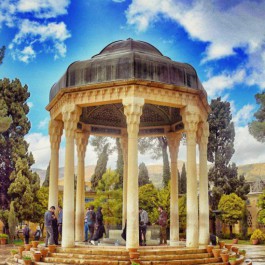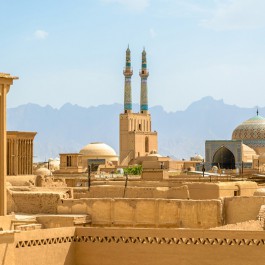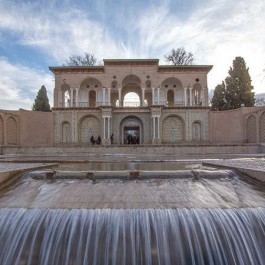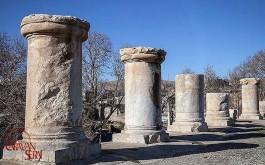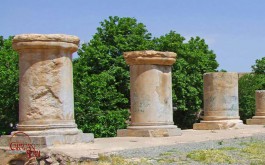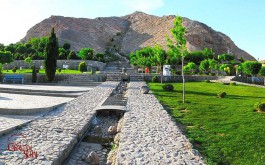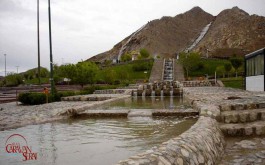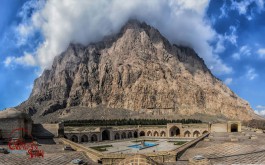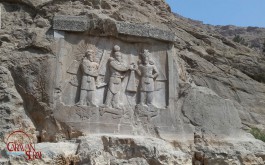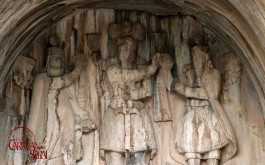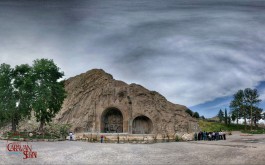Bakhtaran is the former name of Kermanshah, the capital and also the largest city of Kermanshah Province. It is ranked as the ninth populous city of Iran which is considered as a popular city throughout the nation; additionally, Kermanshah is an ideal option for arranging Iran exploration tours. Furthermore, Kermanshah is the most populated city in the central region of Bakhtar and the largest city with Kurdish-spoken population. The city is situated in west part of the country. Most of its citizens speak various dialects of Kurdish language. Laki language and Kermanshahi dialect of Persian language are prevalent across the city. The city has mild mountainous climate. In spite of active industries such as cement manufactory, oil refinery, petrochemistry, steel manufactory, and also other small-scale industries, Agriculture is considered as the main industrial activity of the city.
Kermanshah is considered as a historical and cultural city of Iran that dates back to the fourth century AD.
Tourist attractions of Kermanshah for arranging Iran exploration tours:
There are numerous tourist spots in Kermanshah, because the city has significant historical and cultural attractions that make it as one of the most important touristy cities of Iran.
Taq-e Bostan
Taq-e Bostan is one of the most famous tourist destinations of Kermanshah City. There is a collection of stone inscriptions and a series of large rock reliefs remained from Sasanian Empire which is located in the north west of Kermanshah city. The complex is highly valuable in terms of historical and artistic view with two large and small arches and some inscriptions carved on the stone.
Images carved on the stone indicate historical events including coronations of Khosrow Parviz, Artaxerxes II of Persia, Shapur II and Shapur III.
Existence of the mountain and the spring in Taq-e Bostan site make it as a recreational place that have captivated the attention of tourists from long time ago. This spectacular historical site was registered as a national heritage of Iran on the 6th of January, 1932 AD. It was planned to register Taq-e Bostan as a World Heritage on UNESCO list. Unfortunately, the surrounding restaurants and houses hinder the plan to be realized because they create lots of problems for this historical monument.
Bisotun Historical
Bisotun Historical Complex is located in a 30 kilometers distance to the north east of Kermanshah city, the south west of Bisotun city and in the hillside of a mountain with the same name situated on Hamadan- Kermanshah road. Holiness of Bisotun Mountain, the pleasant climate and locating on critical roads including the Silk Road led to attract many kings and commanders. Hence, unmatched relics carved on the hillside have been remained.
This historical, cultural and natural site possesses 28 registered national heritages; in addition, 150 historical monuments were identified in its frontage. In 2006 AD, the inscription and the carved image of Darius the Great were registered on UNESCO World Heritage List which is the remnant of Achaemenid Empire.
Hosein Khan Moein-al Roaya constructed Tekiye Moaven Almolk in Kermanshah city which was later completed by the efforts of Hasan Khan Moein Almolk. The complex consists of three main parts named Hoseinieh, Zeinabieh and Abbasieh with a particular tiling which is unique across the world. The colors used in tiling are natural and create a certain beauty. Tekiye Moaven Almolk hosts Kermanshah citizens' mourning ceremonies. Zeinabieh was built to be used for women where had two doors. Women had used the door of the upper part for entrance that prevented them from confronting with men while attending mourning ceremonies.
Tekiye Biglarbeigi
Tekiye Biglarbeigi is located in the old neighborhood of Feiz Abad. The Tekiye was constructed during Qajar dynast. Tekiye Biglarbeigi has an exclusive Aina-Kari (a kind of interior decoration made by Iranian artists by putting small pieces of mirror together in geometric forms) that is unique among other Tekiyes throughout Kermanshah City. A spacious hall decorated with mirrors was built in the west side of the Tekiye's yard where is known as Hoseinieh. The hall has been decorated by perfect decorations and its inscriptions are attributed to the era of Mozaaffar ad-Din Shah Qajar. Biglarbeigi spacious living room is situated in the two sides of the hall. Currently, Tekiye Biglarbeigi is used as the Caligraghy and Writing Museum of Kermanshah, where hosts many tourists. Moreover, old documents of Biglarbeigi family are exhibited in the museum.
Temple of Anahita is one of the largest stone buildings in Iran which is located in Kangavar city, Kermanshah province. "Anahita" was the angel of water, abundance and beauty that was highly valuable for Iranian. Anahita Temple is a place for worshipping, similarly to other buildings on highlands, construction method of the building was in the style of platform. A set of stone columns were installed on the top of this historical site. The columns of this part are 54.2 meters in height. Anahita Temple is attributed to Parthian Empire or Sasanian Empire.
Taq-e Gara
Taq-e Gara also known as Taq-e Shirin is situated on Kermanshah- Sarpol Zahab road, in Pataq pass. The structure of Taq-e Gara resembles an arch which was entirely built of stone blocks that were cut in rectangular cubes. The interior walls had been carved in geometrical shapes. There is no precise evidence of the construction's time of the building. While some people are on this assumption that the arch might date back to Parthian Empire, others attribute the structure to the Sasanian Empire. On the other hand, archeological documents indicate that the building belongs to the late Sasanian era, during the kingdom of Khosrow II.
Koohestan Park
Koohestan Park is situated in the north of Kermanshah city, in the proximity of the historical site of Taq-e Bostan. The park is one of the largest and most beautiful touristy parks across the city. The spectacular lighting and the two artificial waterfalls in the park create a romantic atmosphere.
Koohestan Park is the roof of Kermanshah where you can observe the eye-catching perspective of the city. Do-Ashkaft Cave is another attraction that you can enjoy while visiting the park.
Sarab
Sarab is a village located in the north of Sahneh rural district with a pleasant climate. The beautiful waterfalls, the scenic nature and the wonderful climate of the region convince numerous travelers and tourists to choose it as their travels' destination. Darband is a beautiful valley in Sahneh where is covered by diverse types of lush trees. Probably, Darband was a recreational site for many kings in different eras. The spring water source of Darband is called Chahar Cheshmeh that is located in the north part of Darband. Not so long ago, a small waterfall was formed from the spring which was dried due to the drought and the name of this waterfall had been changed to Khoshkeh Waterfall (Dried Waterfall). After passing an approximate 500 meters route, the water of Chahar Cheshmeh discharges into the main waterfall.
